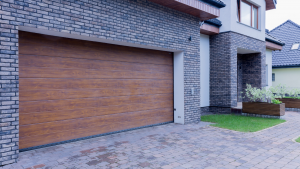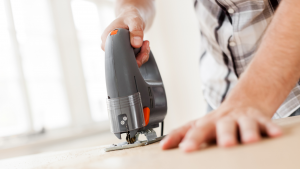Many homeowners unknowingly commit design mistakes that lead to a dated appearance. Identifying and correcting these common missteps is essential for creating a fresh and modern living space. From neglecting current trends to improper furniture placement, each choice impacts the overall feel of a home.
One prevalent issue is the use of outdated color palettes. Sticking with colors that have fallen out of favor can give a room a stale atmosphere. Incorporating contemporary hues can breathe new life into a space and reflect current styles.
Another mistake is overcrowding rooms with furniture and decor. Clutter can make any environment feel cramped and outdated. By embracing a minimalist approach and selecting key pieces, homeowners can achieve a more updated and cohesive look.
Common Interior Design Mistakes That Date Your Home
Many homeowners unwittingly contribute to an outdated look through common design mistakes. Attention to modern trends and functionality is crucial to maintain a fresh and appealing aesthetic.
Overusing Outdated Color Palettes
Certain color palettes can make a home feel stuck in the past. Popular choices like avocado green, burnt orange, or too many muted tones often evoke a retro vibe that isn’t appealing today.
Instead, homeowners should consider incorporating neutral shades, complemented by vibrant accents. For instance, using a crisp white or soft grey base can create a modern backdrop. Adding bold accessories like cushions, art, or vases in contemporary colors can enhance the freshness of the space without overwhelming it.
When choosing colors, it’s also vital to consider the flow between rooms. Transitional hues can help coordinate spaces, ensuring that the overall design feels cohesive and up-to-date.
Relying on Old-Fashioned Furniture Styles
Furnishings play a significant role in defining a home’s style. Sticking to pieces that are overly ornate or influenced by a previous era can hinder a home’s aesthetic appeal.
Modern design emphasizes simplicity and functionality. Sleek lines and minimalist furniture can elevate a space significantly. Designs such as Scandinavian, mid-century modern, or industrial styles work well today and are often found in current catalogs.
Choosing furniture that integrates storage solutions can also prevent clutter, which further enhances a home’s modernity. Investing in multi-functional pieces allows for flexibility in arranging spaces, making them feel larger and more usable.
Neglecting Modern Lighting Solutions
Lighting is often an overlooked element in home design, but it is essential for style and ambiance. Relying on outdated light fixtures can make a home appear dim and uninviting.
To modernize a home, consider incorporating LED technology, which offers efficient and versatile lighting options. Pendant lights, floor lamps, and wall sconces with clean lines can add a contemporary flair.
A layered lighting approach enhances functionality and creates depth. Combining ambient, task, and accent lighting can help homeowners achieve a balanced look. Modern dimmer switches also offer control over lighting intensity, enabling adaptability for different moods and occasions.
Layout and Decor Choices That Create an Outdated Look
Poor layout and decor choices can significantly impact the modernity of a home. Two common mistakes are cluttered room arrangements and neglecting the flow of open spaces.
Cluttered and Inefficient Room Arrangements
A cluttered room arrangement leads to confusion and discomfort. Furniture that is overcrowded can make a space feel cramped and uninviting.
To avoid this mistake, consider the following tips:
- Choose proportionate furniture: Ensure that each piece fits well within the space.
- Leave breathing room: Provide clear pathways for movement.
- Limit decor items: Select a few meaningful pieces instead of overwhelming walls with art or knick-knacks.
These adjustments can change a room from chaotic to serene, enhancing the overall aesthetic.
Ignoring Functional Flow in Open Spaces
Open spaces require careful attention to functional flow. Ignoring this can create disjointed areas that feel outdated.
Key aspects to consider include:
- Designate zones: Use rugs or furniture arrangement to define different areas within a large space.
- Maintain sightlines: Arrange furniture so that one can see across the room without obstruction.
- Incorporate balance: Distribute larger and smaller items evenly throughout the space to create harmony.
When functional flow is prioritized, the area feels cohesive and contemporary, avoiding an outdated appearance.
Material and Finish Selections to Avoid
Choosing the wrong materials and finishes can significantly impact a home’s aesthetic. Certain outdated options can make spaces feel less modern and refreshing.
Sticking to Old-Fashioned Wall Textures
Textured walls like popcorn ceilings or heavily textured plaster can date a home instantly. These finishes not only draw attention away from more contemporary design elements, but they also contribute to a cluttered look.
Instead, smooth wall surfaces or subtle textures offer a cleaner, more updated appearance. Options like matte or satin finishes in neutral colors can enhance the room’s light and openness. When considering wallpaper, avoid busy patterns from previous decades. Choose subtle or single-color prints to maintain a modern vibe.
Using Outmoded Flooring Materials
Certain flooring materials have fallen out of favor due to their maintenance issues and outdated aesthetics. For instance, wall-to-wall carpeting in bright colors can make a space feel confined and dated. It is better to choose hardwood, laminate, or luxury vinyl, which provide a timeless look and are easier to clean.
Additionally, avoid overly ornate tiles or linoleum designs that evoke styles from past decades. Instead, opt for large-format tiles in neutral tones or wood-like finishes, enhancing the space’s contemporary feel. Simple patterns and finishes create a more cohesive and inviting environment.
Decorative Elements That Date Your Space
Certain decorative elements can quickly age a home’s aesthetic. Recognizing these can help homeowners achieve a more modern and inviting environment.
Displaying Excessive Themed Decor
Themed decor can be charming, but excessive display often leads to a cluttered look. For example, tropical, nautical, or holiday-themed items can lose their appeal over time.
Having too many themed decorations can overwhelm a space and make it feel less sophisticated. Instead, using a few choice pieces allows for personal expression while maintaining a cohesive design.
A minimalist approach tends to age better. Focus on quality over quantity. Opt for timeless accents or artworks that enhance the home without overwhelming it.
Hanging Heavy Window Treatments
Heavy window treatments can make a room feel dated. Thick, ornate drapes were once popular but can now inhibit natural light and make spaces appear smaller.
Lightweight fabrics or simple blinds are often more appealing. They allow for flexibility in styling and can contribute to a brighter atmosphere. Additionally, sheer panels or minimal designs help create a sense of openness and modernity.
Selecting colors that complement the overall palette of the home is crucial. Neutral or soft hues provide a fresh, updated look, while bold or dark options can quickly feel outdated.




